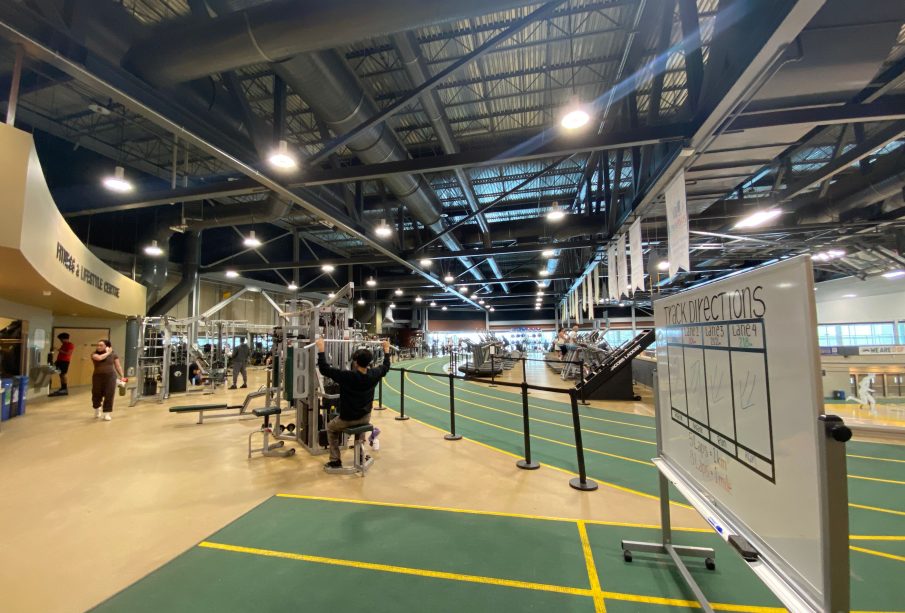A space of her own

The longing for a place free of pressures
As I navigate through the bustling campus of the University of Regina (U of R), I often find myself pondering ways to enhance our collective university experience. In the ongoing “I wish I had…” series, one recurring idea has caught my attention – the need for a women-only gym space and club on our campus.
The call for a women’s only gym club at U of R is beyond the aim of creating an environment that goes beyond physical fitness. It is also about crafting a space where women students not only feel physically supported but also empowered to focus on their well-being without external pressures. While the U of R already provides diverse amenities in terms of fitness and sports in the Kinesiology building, a dedicated space for women’s gyms would help cater to the needs and preferences of women students.
Understanding the hectic schedules of university students, especially after classes, the women-only gym would aim to provide convenient operating hours. Extending its accessibility into the evenings would enable the students to take part in physical activities that would complement their academic commitments, thus fostering a culture of health and well-being.
This initiative could be helpful for young women who not only dedicate their days to academic pursuits but who often find themselves taking on additional responsibilities at home. Many women students are not only students, but also caregivers, managing household responsibilities and supporting their families. For these ladies, the post-class hours might be the only feasible time to focus on their self-care.
The emergence of women-only gyms responds not only to the issue of “gymtimidation” but also actively works to prevent it. “Gymtimidation” is the feeling of intimidation and apprehension of navigating through a gym packed with serious ‘gym fanatics.’ This sentiment, particularly impactful for women, can add an extra layer to the gym experience, making them feel scrutinized and out of place.
The women-only gym would help foster a comfortable and accessible space for students. Shared experiences and common goals would create a camaraderie that not only motivates but also makes their fitness journey enjoyable and sustainable. The absence of so-called “gym fanatics” or judgemental stares allows them to focus on their workouts, thus building confidence and creating a positive relationship with others.
Moreover, tailoring the emphasis on a women-only gym to the U of R’s Kinesiology building requires specific and practical measures. Secure access controls can be introduced by implementing advanced systems like key cards or biometrics so that only authorized women students can access the gym space. Actively recruiting and training women staff for different roles within the gym involves a targeted approach to ensure that the personnel reflect the diversity and needs of the women student community at the U of R.
It would involve outreach and recruitment efforts specifically to hire qualified women trainers, fitness instructors, maintenance staff, and administrative personnel. Training programs should focus on equipping the staff members with the necessary skills for their roles and emphasize creating an inclusive environment. This includes education on sensitivity toward diverse fitness goals, body types, and individual comfort levels.
The facility can be equipped with diverse equipment ranging from cardiovascular and strength training equipment to functional training zones and even dedicated group exercise studios hosting Zumba. This can also include features like massage chairs, meditation pods, or serene spaces for stretching and mindfulness. Integrating technology such as smart equipment and fitness trackers allows students to personalize their workout routines and track their progress.
Within the women-only gym, the presence of well-appointed and meticulously maintained changing rooms, equipped with spacious lockers and vanities would contribute to a sense of privacy. Standards of cleanliness maintained through regular sanitation practices would also create a hygienic space for the women students to focus on their fitness goals. For example, showers stocked with quality toiletries ensure that they have access to the essentials needed for post-workout reprieve.
Wellness workshops can also be considered with the introduction of a women-only gym. Holistic health practices involving mindfulness, stress management, and techniques for emotional balance can be implemented to equip women not only with physical tools but also emotionally and mentally. Since the U of R is already equipped with a Student Wellness Centre, collaboration with the nurse practitioner can be integrated to meet the specific needs of women students as they focus on health and sport.
The focus can be on balanced and nutritious diets, mindful eating practices, and nutrition education to assist in their fitness journeys. Women’s health awareness workshops complementary to the objectives of the women-only gym. These targeted workshops would help to contribute to the creation of a supportive and informed women’s community within the gym space, where they can share their experiences, and knowledge and motivate each other on their path to health and fitness.
Thus, the proposed women’s only gym at the U of R embodies a commitment to holistic well-being, providing women students with a dedicated space for physical and mental empowerment. With comprehensive equipment facilities and workshops, the women’s only gym would aspire to create a supportive U of R community thus enhancing the university experience.









